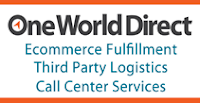“The more accurate term is ‘variable renewables,’” explains energy consultant Nancy LaPlaca. “The word ‘intermittent’ reinforces the impression that wind and solar are unreliable. The word ‘variable’ underscores the fact that, like all energy sources, wind and solar can and must be managed by grid operators.”
“Wind and solar energy are variable because their output changes gradually over many hours, and those changes can be predicted,” explains American Wind Energy Association (AWEA) Senior Electric Industry Analyst Michael Goggin. “Fossil and nuclear power plants are the ones that are intermittent, as their failures occur instantaneously and without warning, which is far more costly for grid operators.”
Among the ten rambling points in Tverberg’s 3,000-plus word essay are four misinformed accusations:
-renewables don’t replace oil,
-don’t reduce greenhouse gas emissions,
- can’t grow fast enough.
“Wind and solar PV do not fix our oil problem,” she writes. “Our big problem is with oil.”
That is an irrelevant “straw man” argument, Goggin responds. “Nobody who knows what they’re talking about ever claimed renewables replace oil except in minor applications.”
To address the oil problem, electric car advocate Paul Scott argues, put plug-in vehicles on the grid and clean up the grid.
Cleaning up the grid means more wind and solar. Tverberg’s argument that they do not reduce greenhouse gas (GHG) emissions is “completely debunked,” Goggin says, by the conclusions of the comprehensive Life Cycle Harmonization Project from the National Renewable Energy Laboratory (NREL) (summarized in this fact sheet).
Though Tverberg claims there are only superficial “top of the iceberg” evaluations of various sources’ GHGs, the NREL study incorporates:
-upstream factors: raw
materials extraction, construction materials manufacture, and power plant construction
-fuel cycle factors: resource extraction and production, processing and conversion, and delivery to site
-operation factors: combustion, maintenance, and operations, and
-downstream factors: dismantling, decommissioning, disposal
and recycling.
The systematic NREL literature assessment of thousands of peer-reviewed life cycle analyses (LCAs) published over the last 30 years sorted out the data and technical information. “Total life cycle GHG emissions from renewables and nuclear energy are much lower and generally less variable than those from fossil fuels,” the LCA analysis concludes. “From cradle to grave, coal-fired electricity releases about 20 times more GHGs per kilowatt-hour than solar, wind, and nuclear electricity.”
NREL’s work is so thorough its findings and methods were incorporated into the work of the Intergovernmental Panel on Climate Change.
Ramping up renewables tends to raise CO2 emissions “by ramping up China’s economy,” Tverberg argues. “The benefit China gets from its renewable sales is leveraged several times, as it allows the country to build new homes, roads, and schools, and businesses to service the new manufacturing. In China, the vast majority of manufacturing is with coal.”
Tverberg’s idea that renewables cause China’s increased emissions “is absurd,” Goggin says. “The chart in her article clearly shows China has ramped up coal use to meet increased overall energy demand.”
Hundreds of industries make up China’s $12 trillion-plus manufacturing sector. “It may be correct to say that manufacturing renewables ramps up China's economy,” explains energy analyst and Global Footprint Network Policy Officer Chris Nelder, “but that's true for everything that China does. Why single out renewables?”
In solar, the U.S. and Germany do much of the polysilicon refining, the most energy intensive part of module manufacturing. “And over 70 percent of U.S. wind components are made here,” Goggin says.
“Renewables raise world CO2 emissions indirectly by making the country using them less competitive,” Tverberg argues. The higher electricity cost, she explains, drives manufacturing to countries that use lower-priced fossil energy sources.
“I am not aware of any evidence that using renewables has made any country less competitive by raising the price of manufactured goods,” Nelder says. “The OECD has been outsourcing manufacturing to China for decades. Separating out the effect of renewables is extremely difficult.”
The higher cost of renewables-generated electricity also drives governments to balance their energy mixes with cheap fossil sources. “This seems to be at least part of the problem behind Germany’s difficulties with renewables,” Tverberg speculates.
Her observations about the costs of renewables don’t stand up to scrutiny. A recent Synapse Energy Economics report showed that doubling the use of wind energy in the Mid-Atlantic and Great Lakes states will save consumers a net $6.9 billion per year, after costs. And, Goggin adds, “U.S. Department of Energy data confirm that consumers in the top wind energy producing states have seen their electric rates increase at around half the rate of consumers in states that produce less wind energy.”
Recent articles “have misleadingly looked at small snapshots in time that miss the large consumer savings and pollution reductions wind energy is producing in Germany,” Goggin wrote recently.
“Germany has already seen a 20 percent drop in wholesale electricity prices over the last year, in large part because wind and solar energy displace more expensive sources of energy,” he points out.
“Renewable energy has reduced wholesale prices by $0.012 cents per kilowatt-hour,” Clean Technica reported last fall from a report by German research firm BrainPool. For Germany’s predicted 2014 consumption of 482 terawatt-hours, “renewable energy will reduce wholesale prices by EUR 5.784 billion.”
Tverberg also says – again with inadequate documentation – that renewables are too costly “because current laws overcompensate owners of intermittent renewables relative to the value they provide to the grid.”
She argues that at retail rates renewables are overcompensated. But while there is a large difference between retail and wholesale electricity prices, Goggin acknowledges, she ignores the fact that all utility-scale projects, including wind and solar, are paid at a wholesale rate. And the difference between wholesale and retail rates is almost entirely made up of the cost of distribution lines that deliver electricity from all generation sources to homes and businesses.
It is doubtful renewables production can ramp “to even 5 percent of the world’s energy supply,” Tverberg argues in one paragraph. But when renewables production does ramp up to meet world demand, she says in another paragraph, there will be “polluting minerals” and “toxic materials” to deal with. Besides the obvious contradiction, she is mistaken on the first point and misguided on the second.
Wind and solar are among the world’s fastest growing energy sources. They were over 5.8 percent of U.S. generating capacity through November 2013 and were about 54 percent of the new capacity installed in 2012. Global solar capacity grew 42 percent and wind capacity grew 19 percent in 2012, according to the most recent IEA numbers. They are projected to be 10 percent of global electricity by 2020.
“Globally non-hydro renewables now have a compound annual growth rate of 5.9 percent and rising,” Nelder notes. “Of course it takes time. All transitions have. And they all grow very slowly for the first few decades.”
The pollutants and toxicities associated with renewables pale in comparison to nuclear waste and the poisons that spew from coal plants, LaPlaca points out.
“Making energy from anything causes pollution,” Nelder adds. The question is how bad is the pollution relative to the alternatives? Tverberg presents no data.”
Unlike conventional power plant life spans of 40 years, Tverberg claims, referencing a Renewable Energy Foundation analysis, “it may not be economic to operate wind turbines for more than 12 years to 15 years.”
But Danish Energy Agency data shows no evidence of “an age-related performance drop,” reported Windpower Monthly’s David Milborrow. “Performance generally appears to be maintained at a consistent level, with only a slight decline with age — one in line with other types of power plants.”
Conventional power plants require expensive regular maintenance and periodically shut down to replace or refurbish major components. Most wind and solar installations generally require little more than basic maintenance, Goggin notes.
Much of Tverberg’s analysis is based on an Energy Returned on Energy Invested perspective. But, Nelder says, “EROEI and LCA analyses are deeply problematic when comparing renewables to fossil fuels. Is there an analysis showing that over 20-plus years, a new investment made today in renewables is more expensive than one in fossil fuels? And anyway, what is the alternative? That we stay committed to coal?"

 Your intrepid reporter
Your intrepid reporter click to enlarge
click to enlarge click to enlarge
click to enlarge click to enlarge
click to enlarge click to enlarge
click to enlarge click to enlarge
click to enlarge click to enlarge
click to enlarge click to enlarge
click to enlarge click to enlarge
click to enlarge click to enlarge
click to enlarge click to enlarge
click to enlarge click to enlarge
click to enlarge click to enlarge
click to enlarge click to enlarge
click to enlarge click to enlarge
click to enlarge click to enlarge
click to enlarge click to enlarge
click to enlarge click to enlarge
click to enlarge click to enlarge
click to enlarge click to enlarge
click to enlarge click to enlarge
click to enlarge click to enlarge
click to enlarge click to enlarge
click to enlarge click to enlarge
click to enlarge click to enlarge
click to enlarge click to enlarge
click to enlarge click to enlarge
click to enlarge click to enlarge
click to enlarge click to enlarge
click to enlarge click to enlarge
click to enlarge click to enlarge
click to enlarge click to enlarge
click to enlarge click to enlarge
click to enlarge click to enlarge
click to enlarge click to enlarge
click to enlarge click to enlarge
click to enlarge click to enlarge
click to enlarge click to enlarge
click to enlarge




